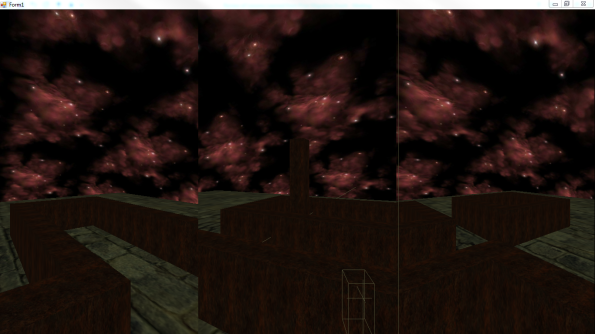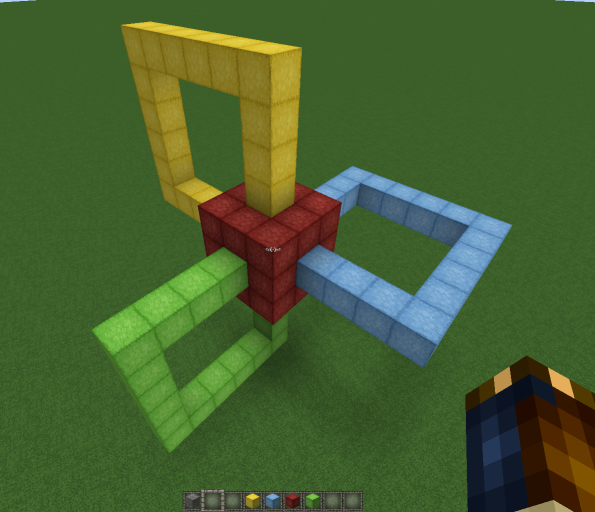Imagining physical worlds in higher dimensional space is a passion of mine and I found myself thinking about what architectural features a building might have if it were designed in higher dimensions. To that end I decided I wanted to create a 4d CAD system of sorts so that I could design and explore 4d spaces. I did this in a fun way by extending the way a CAD will often show three orthographic views (from above XZ, from the front XY and from the side YZ) to help visualize a 3d object. In my system, you have three 3d views to help visualize a 4d space (XYZ, XYW, ZYW). As you move in any one of these spaces you are effecting the shared axis coordinate in the other two and all together are able to define a composite location in 4d space. Additionally I created the ability to place and destroy blocks with a mouseclick like in Minecraft in these spaces. What really helps to more intuitively appreciate the world is that collision detection works in 4 dimesions, meaning that if I am advancing in one 3d space in a way that I collide in another 3d space with a block I stop. I also made the editorial decision that Y is always UP and that gravity is always DOWN with respect to Y… so you walk along the X, Z and W axis but would need to fly (or tunnel) to move along the Y axis.
Above: A simple maze that is nothing more than a simple hallway that turns in several dimensions but can still prove confusing to get from one end to the other.
This was a very fun project to work on with some unique challenges and I learned a lot simply stacking blocks and wandering around. The principle learning I took away with respect to how to consider architecture in four dimensional space is to think about how a floor plan defines the rooms of a house on a 2d piece of paper. On a floor plan you can look at square room and consider that there can be four doors out of the room into adjacent rooms in each of the cardinal directions, this is obvious and readily described in 2d. In a 4d room though there are two additional cardinal directions so instead of four adjacent rooms there are six. So the floor plan of the floor in a 4d house is in fact a 3d map. The realization is not that there are six mutually orthogonal doors out of a room in 4d space, it is that you can relatively easily design buildings by simply visualizing the floor plans in 3d space.
Imagine this 3d floor plan for instance, appropriately modeled for us in Minecraft. From the red room there are six exits that each return back to the room via one of three different hallways. This isn’t “flying” or “tunneling” either, this floor plan represents a viable 4d space where you are in a 4d room with 6 exits on walls all mutually perpendicular with no opening in the floor or ceiling and you are walking on a floor the entire time through these hallways. Remember that like a normal floor plan, each of these blocks in this 3d floor plan neglects to indicate the height of the room, only its non-height dimensions.
Another thing to consider with 4d architecture is whether your occupant can perceive all 4 dimensions or not. So let’s say the room you were in right now is within a 4d house but you could only perceive 3d spaces. Let’s say you were sitting in a chair that could roll around but it also had a lever on the armrest to roll you back and forth in the 4th dimension. You might be boggled as the big room became a narrow hallway or disappeared altogether as you “rolled” in the 4th dimension but this would not seem surprising at all to a 4d occupant who could simply perceive the space. So you could design 4d buildings with a 3d occupant in mind to exploit the wonder of the area morphing or more functionally for a 4d occupant to simply get from room to room.
ToDo add Source code reference

